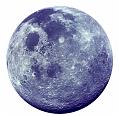Ordering the universe
A GREAT DEAL OF OUR KNOWLEDGE about the ancient science of astronomy comes from the Alexandrian Greek philosopher Claudius Ptolemaeus (c. 100-178 CE), known as Ptolemy. He was an able scientist in his own right but, most importantly, he collected and clarified the work of all the great astronomers who had lived before him. He left two important sets of books. The Almagest was an astronomy textbook that provided an essential catalog of all the known stars, updating Hipparchus. In the Tetrabiblos, Ptolemy discussed astrology. Both sets of books were the undisputed authority on their respective subjects for 1,600 years. Fortunately, they were translated into Arabic, because with the collapse of the Roman Empire around the 4th century, much accumulated knowledge disappeared as libraries were destroyed and books burned.
Star Cataloger
Hipparchus (190-120 BeE) was one of the greatest of the Greek astronomers. He cataloged over 1,000 stars and developed the mathematical science of trigonometry. Here he is looking at the sky through a tube to help him isolate stars-the telescope was not yet invented (pp.22-25).
The Leap Year
One of the problems confronting the astronomerpriests of antiquity was the fact that the lunar year and the solar year (p.13) did not match up. By the middle of the 1st century BeE, the Roman calendar was so mixed up that Julius Caesar (100-44 BeE) ordered the Greek mathematician Sosigenes to develop a new system. He came up with the idea of a leap year every four years. This meant that the odd quarter day of the solar year was rationalized every four years.
Farnese Atlas
Very few images of the constellations Ocean have survived from antiquity. The main source for our knowledge is this 2nd-century Roman copy of an earlier Greek statue. The marble statue has the demigod Atlas holding the heavens on his shoulders. All of the 48 Ptolemaic constellations are clearly marked in low relief.
Spherical Earth
The concept of a spherical Earth can be traced back to Greece in the 6th century BCE. By Ptolemy's time, astronomers were accustomed to working with earthly (terrestrial) and starry (celestial) globes. The first terrestrial globe to be produced since antiquity, the 15th-~entury globe by Martin Behaim, shows an image of Earth that is half-based on myth. The Red Sea, for example, is colored red.
Arabic School of Astronomy
During the "Dark Ages" the great civilizations of Islam continued to develop the science of astronomy. Ulugh Beigh (c. 15th century) set up his observatory on this site in one of Asia's oldest cities-Samarkand, Uzbekistan. Here, measurements were made with the naked eye.
Geocentric Universe
It is logical to make assumptions from what your senses during its orbit tell you. From Earth it looks as if the heavens are circling over our heads. There is no reason to assume that Earth is moving at all. Aneient philosophers, naturally, believed that their Earth was stable and the eenter of the great eosmos. The planets were arranged in a series of layers, with the starry heavens-or the fixed stars, as they were called forming a large crystalline casing.
Earth At The Center
The geocentric or Earth -centered universe is often referred to as the Ptolemaic universe by later scholars to indicate that this was how classical scientists, like the great Ptolemy, believed the universe was structured. He saw Earth as the center of the universe, with the Moon, the known planets, and the Sun moving around it. Aristarchus (c. 310-230 BeE) had already suggested that Earth travels around the Sun, but his theory was rejected because it did not fit in with the mathematical and philosophical beliefs of the time.
Problems With The Geocentric Universe
The main problem with the model of an Earth-centered universe was that it did not help to explain the apparently irrational behavior of some of the planets, which sometimes appear to stand still or move backward against the background of the stars (p.19). Early civilizations assumed that these odd movements were signals from the gods, but the Greek philosophers spent centuries trying to develop rational explanations for what they saw. The most popular was the notion of epicycles. The planets moved in small circles (epicycles) on their orbits as they circled Earth.
Teaching Tool
Astronomers have always found it difficult to explain the three dimensional motions of the heavens. Ptolemy used something like this armillary sphere to do his complex astronomical calculations and to pass these ideas on to his students.
